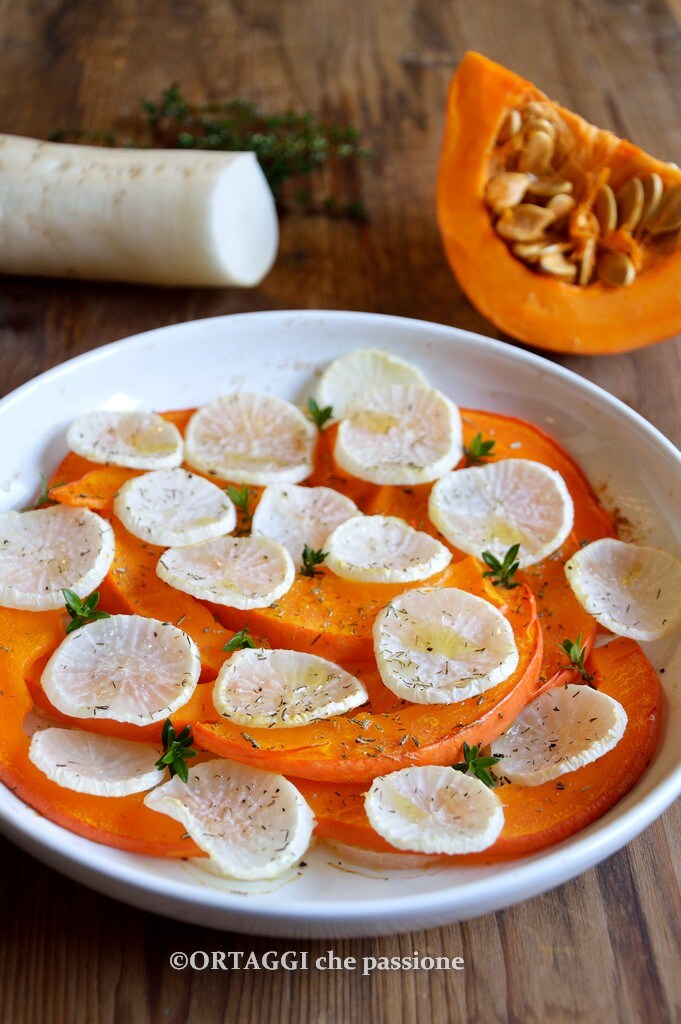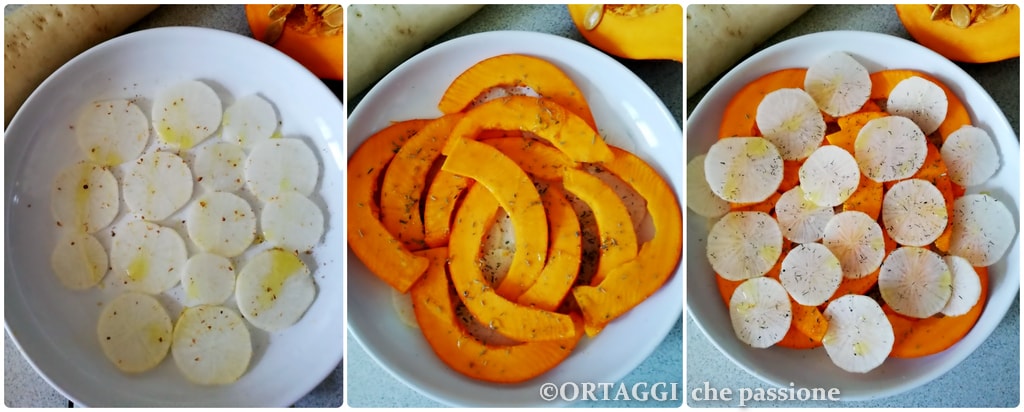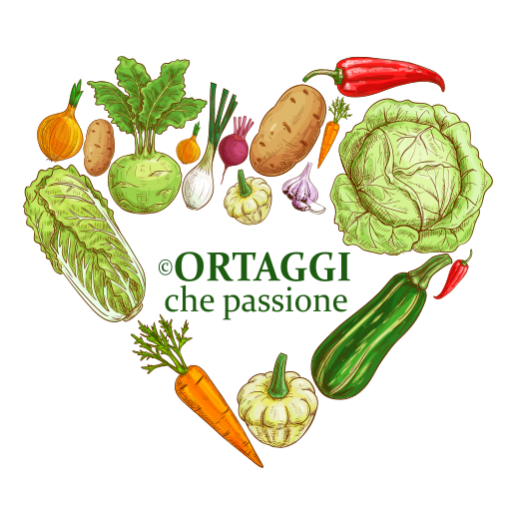Baked daikon with pumpkin is a recipe that offers a unique mix of flavors and textures, with the velvety sweetness of pumpkin harmoniously blending with the slightly spicy and crunchy taste of daikon. Together, they create a healthy, light, gratin, and tasty side dish, perfect to accompany a variety of main courses. Alternatively, you can use carrots or potatoes instead of pumpkin to give this side dish more substance.
VEGETABLE SEASON:
#daikon (winter or white Japanese radish) – from September to February
#pumpkin – from August to April
RECIPES to enjoy daikon

- Difficulty: Easy
- Cost: Cheap
- Preparation time: 10 Minutes
- Portions: 2
- Cooking methods: Oven
- Cuisine: Healthy
- Seasonality: Fall, Winter
- Energy 52.50 (Kcal)
- Carbohydrates 8.29 (g) of which sugars 3.89 (g)
- Proteins 1.41 (g)
- Fat 2.18 (g) of which saturated 0.38 (g)of which unsaturated 0.16 (g)
- Fibers 1.98 (g)
- Sodium 469.54 (mg)
Indicative values for a portion of 150 g processed in an automated way starting from the nutritional information available on the CREA* and FoodData Central** databases. It is not food and / or nutritional advice.
* CREATES Food and Nutrition Research Center: https://www.crea.gov.it/alimenti-e-nutrizione https://www.alimentinutrizione.it ** U.S. Department of Agriculture, Agricultural Research Service. FoodData Central, 2019. https://fdc.nal.usda.gov
Baked Daikon with Pumpkin
- 7 oz daikon
- 5 oz pumpkin (Hokkaido or other types)
- 1 tbsp extra virgin olive oil
- to taste fine salt (and spices as desired)
Tools
- Baking Dish ceramic oven
- Cutting Board
- Knife smooth blade
Baked Daikon with Pumpkin
Preheat the static oven to 356°F.
Prepare the vegetables: wash the daikon and pumpkin (or carrots) leaving their skin on.
Cut both into thin slices.
In a shallow baking dish, arrange a layer of daikon slices on the bottom, overlap with a layer of pumpkin slices, and finish with a layer of winter radish slices.
Season each layer with extra virgin olive oil, salt, and desired spices (freshly ground coriander seeds, rosemary, thyme, oregano, or dill tips), distributing the seasonings evenly.
Thin slices of potato or sweet potato can be added to this side dish.
Bake the dish in the preheated static oven for about 20 minutes or until the vegetables are tender and the edges are slightly golden. In the last few minutes of cooking, they can be gratinated.
Once ready, remove the vegetables from the oven and serve the baked daikon with pumpkin as a side dish. Garnish with fresh herbs if desired.

STORING baked daikon
Cooked daikon can be stored in the refrigerator for a maximum of 3 days. Before consuming, you can gently reheat it in the electric oven or microwave.
Curiosities
What is the taste of daikon?
Daikon is a Japanese radish, also known as white Japanese radish or winter radish. The taste of daikon is generally sweet and slightly spicy, with a crisp and juicy texture. It can be eaten raw in salads, cooked (pan-fried, baked, steamed), fried or pickled, and is often used in Asian cuisine, particularly in Japanese, Chinese, and Korean dishes. Its flavor can slightly vary depending on the specific variety and the preparation methods.
What are the benefits of daikon?
Daikon is the perfect detoxifier in traditional Chinese medicine. It is a low-calorie white radish with excellent antioxidant and mineral properties, as it contains potassium, calcium, magnesium, manganese and is recommended for dissolving excess fats and improving blood sugar levels, which tend to rise especially after a carbohydrate-rich meal. It aids in digestion, contains fibers that promote intestinal transit, and is truly a boon against cellulite. It also improves skin and bone health. It is useful to curb appetite as a starter and can be eaten raw or cooked.
Dr. CaracausiWhat are the contraindications of daikon?
Daikon is a healthy food, but there are some precautions to consider. For those with thyroid problems, raw daikon contains goitrogens, which might interfere with thyroid function. Additionally, excessive consumption of daikon can cause gastrointestinal issues such as bloating. Those with cruciferous allergies should be cautious, as daikon belongs to this plant family. Moreover, daikon might interact with certain medications, such as blood thinners, and can influence blood sugar levels. As always, it’s best to consume daikon in moderation and monitor your body’s reactions.

